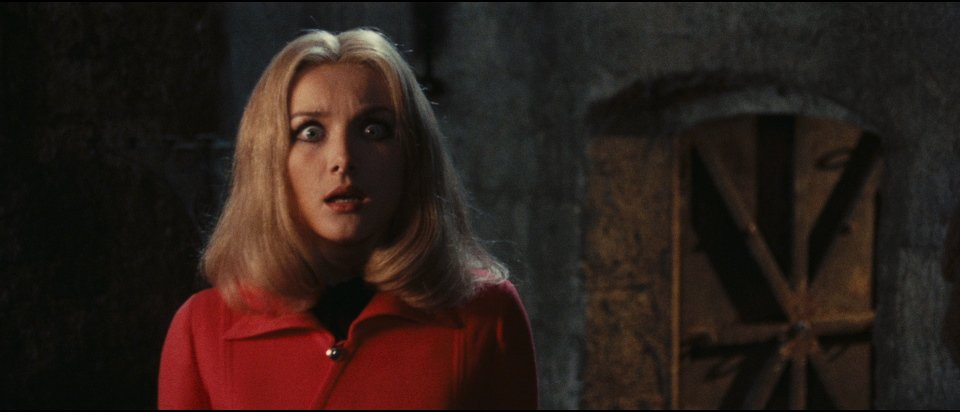
Filmmaker Emilio Miraglia always infused his forays into giallo with Gothic trappings and tropes. La dama rossa uccide sette volte (1972) is no different, and may just be Miraglia’s most realized fusion of these two aesthetics. La dama rossa uccide sette (or The Red Queen Kills Seven Times in english) also tends to lean more heavily on the “whodunnit” element of the giallo, essentially bridging the gap between late nineteenth century Gothic mysteries and the modern supernatural thriller.
Actress Barbara Bouchet is the visual centerpiece of La dama rossa uccide sette volte. Bouchet’s eyes, her innocent, far off gaze, is the focal point around which Miraglia stages macabre spectacle after macabre spectacle. Even Bouchet’s wardrobe reflects the colors that dominate Miraglia’s scenes of brutal violence. This tactic keeps Bouchet’s character Kitty locked in at the center of the narrative even as that narrative meanders and expands. Alberto Spagnoli cinematography glamorizes Bouchet/Kitty in the tradition of Hitchcock but with a much heavier color saturation that is at once sexual and, in moments of violence, grisly.
La dama rossa uccide sette isn’t that traditional a giallo, but I have always preferred more Gothic thrillers. Detractors tend to overlook how central the aristocracy and their world of the historical past is to Miraglia’s film. Within the context of giallo Miraglia paints a portrait of old Europe turned in on itself in a cannibalistic feeding frenzy that has its origins in nineteenth century horror fiction. La dama rossa uccide sette is subtle, beautiful and dreamlike; a masterpiece of its genre.
